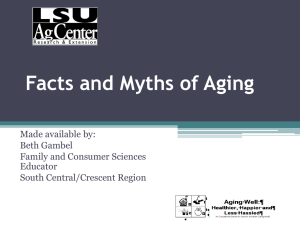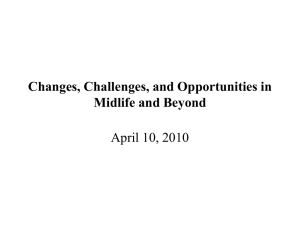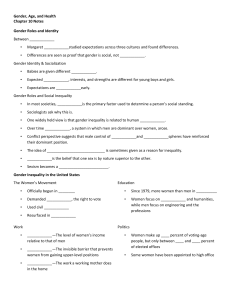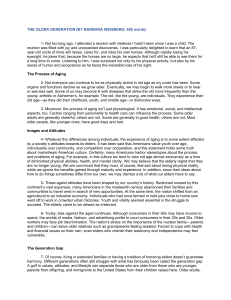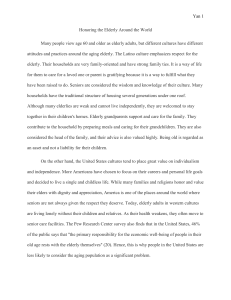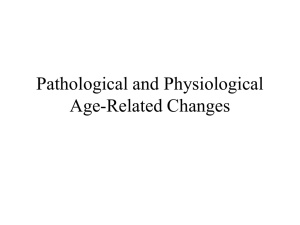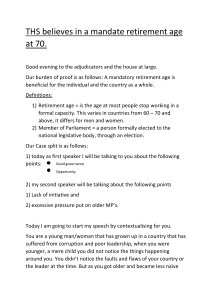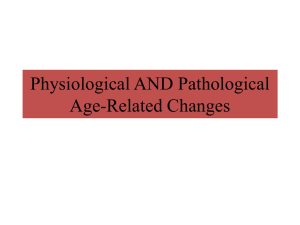Facts and Myths of Aging presented by John Mastronardi from Aging In America
advertisement
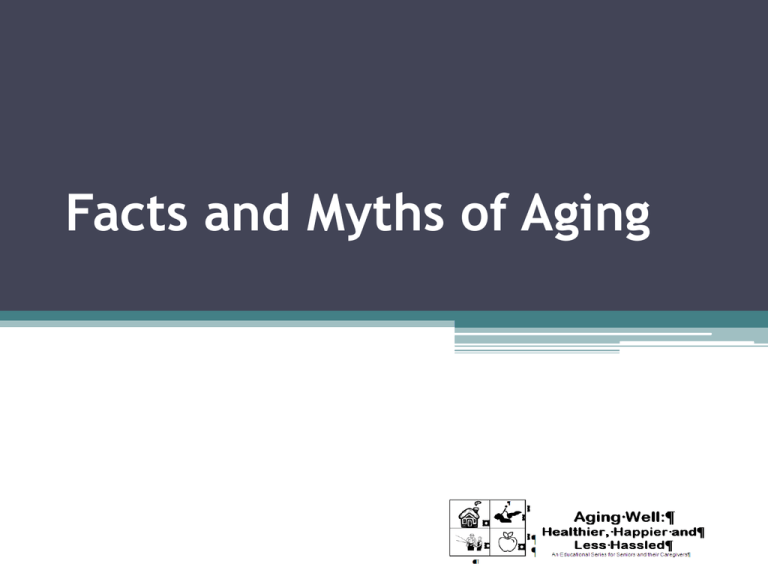
Facts and Myths of Aging Anyone who stops learning is old, whether at 20 or 80. Anyone who keeps learning stays young. The greatest thing in life is to keep your mind young! Henry Ford Human Aging • Begins at birth • Influenced by a composite of biological, psychological, social, functional and spiritual factors • Varies from person to person Fact or Myth? The majority of people over the age of 65 have Alzheimer’s disease. As people grow older, their intelligence declines significantly. It is very difficult for older adults to learn new things. Tell Me and I Will Forget. Show Me and I Will Remember. Involve Me and I will Understand. David Kolb quoting Confucius Personality changes with age. Memory loss is a normal part of aging As adults grow older, reaction time increases. Older adults have more trouble sleeping than younger adults do. Physical strength declines in old age. Most older adults lose interest in and capacity for sexual relations. All five senses tend to decline with advancing age. As Americans age, many have trouble eating well. Older people are increasingly targets for fraud and scams. As people live longer, they face fewer acute health conditions. Retirement is often detrimental to health— i.e., people seem to become ill or die soon after retirement. Most older people are living in nursing homes. The modern family no longer takes care of its elderly. Living below or near the poverty level is no longer a significant problem for most older Americans. Older workers cannot work as effectively as younger workers. It is not the years in your life but the life in your years! Adlai Stevenson Most older adults become set in their ways and are resistant to change. Abuse of the frail elderly is not a significant problem in the U.S. Older adults take longer to recover from physical and psychological stress. Research has shown that old age begins around age 65. Listen to older people……… For they will tell you about living and dying. For they will enlighten you about problem-solving, sexuality, grief, sensory deprivation, and survival. For they will teach you how to be courageous, loving and generous. Irene Burnside, 1975 Opportunities • A gradual shift to home care will result in more professional caregivers working outside of health institutions • Department of Labor starts to implement and enforce the Fair Pay rules for home care workers • Internet/mobile technology is changing the way home care professionals and home service providers are recruited Opportunities • New entrants in the caregiving space can distinguish themselves by making their services easy to understand, intuitive, convenient to use, and affordable. 6 Key Areas of Opportunity • Daily Essential Activities: meals, home and personal care, home repair, delivery, and transportation services • Health & Safety Awareness: health vital alerts, diet & nutrition, medication management, personal safety monitoring, and telehealth • Care Coordination: Care planning, care professional engagement, records and benefits management, recovery support 6 Key Areas of Opportunity • Transition Support: Home retrofit services, long-term care, insurance planning, long-term care provider referral, legal assistance, hospice/funeral planning • Social Well-Being: Digital inclusion, life enrichment and empowerment, community networking, life companions • Caregiver Quality of Life: Respite and backup care, social support, health and wellness, financial/job security
